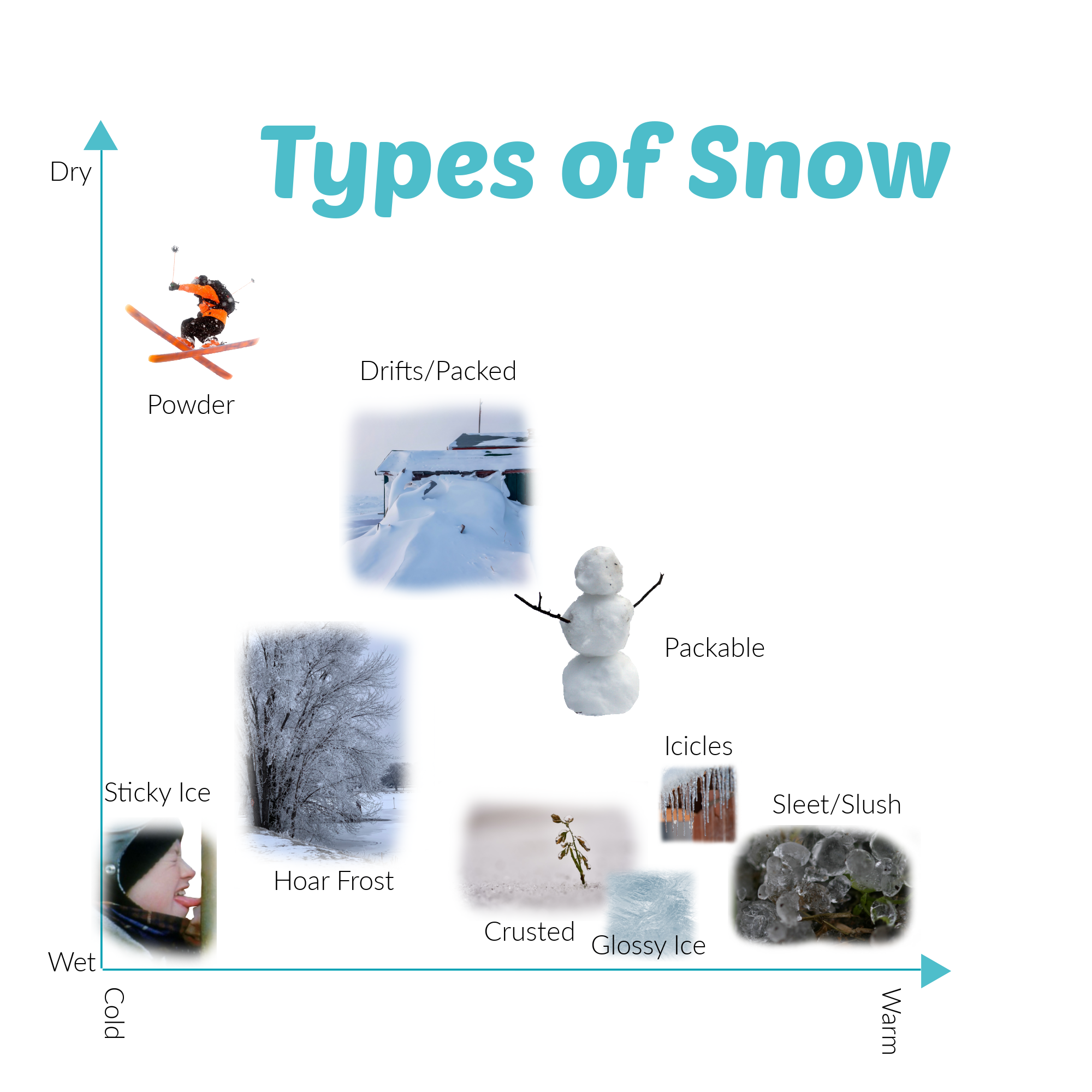Types of Snow
Materials:
Nature Journal, writing utensil of choice, a snowy day
Activity:
On a nature walk pick up a handful of snow. What does it feel like? Is it packable like a snowball or does it fall apart in your hand? Do you crunch through a top layer to a softer layer below? Is it packed hard along the edges of the trail or loose beneath your feet? Is there hoar frost or icicles on the trees? Have them write their observations (or record your child’s observations for them) in their nature journals.
Younger:
Have younger children describe the snow with as many words as they can.
Older:
Have older children discuss the differences between this snow and other snow they have experienced. Ask them what they think causes the snow to behave differently?
Take it Further:
Talk about different types of snow and identify what we can learn about the weather of a place by observing the snow closely.
Types of snow:
Wet snow- This kind is heavy and packable, what you hope for when you go to build a snowman or have a snowball fight but don’t ideal when it piles up on your roof by the foot.
Dry snow- This snow is loose, light, and powdery. Great for skiing and snowboarding but won’t pack at all.
Crusted snow- There may be dry or wet snow underneath it but the top layer of the snow started melting then froze again leaving a sheet of crunchy ice on top. It cracks and breaks when you walk across it. If you are not in proper snow gear the edges can be sharp and hurt the sides of your leg as you fall through to the softer layers beneath it.
Packed snow- This snow can feel like chipping away at a clay-like river bank when you try to dig through it. It often happens when roads are plowed or drifts of snow form over windy flat areas.
Sticky snow- This snow is typically extremely cold packed snow or ice. Your body heat is warm enough to melt the snow or ice under your feet but immediately refreezes it causing an icy bond. You feel that icy bond break as you step giving you a sticky feel vs glossy ice you would have in warmer conditions. This is also what causes foolish kids to get their tongues frozen to metal playground equipment each year.
Hoar Frost- This is when ice crystals (snowflakes) form on structures themselves instead of falling from the sky. When the trees that are already below freezing meet moist air they freeze it causing frost to accumulate.
Frost- Similar to Hoar frost but it accumulates on the ground as the air freezes the mist at night.
Just for fun some other winter conditions you may find:
Icicles- When the snow starts melting on trees or rooftops it drips down. When the air freezes these drips icicles start to form and continue to build on themselves as water drips and freezes.
Black ice- Sometimes the roads ice over in a clear sheet so that drivers can’t perceive the ice and it looks like a clear blacktop. They are caught by surprise when they drive over it and start slipping.
Glossy ice- This ice is melting and has a beautiful sheen of water across the top layer.
Slush/sleet- Snow that is so wet and warm that it is melting and part snow/part water. It can freeze into slick hard ice or continue melting into puddles.
There is a darling little cartoon clip below that your kids may enjoy that explains several types of snow.

